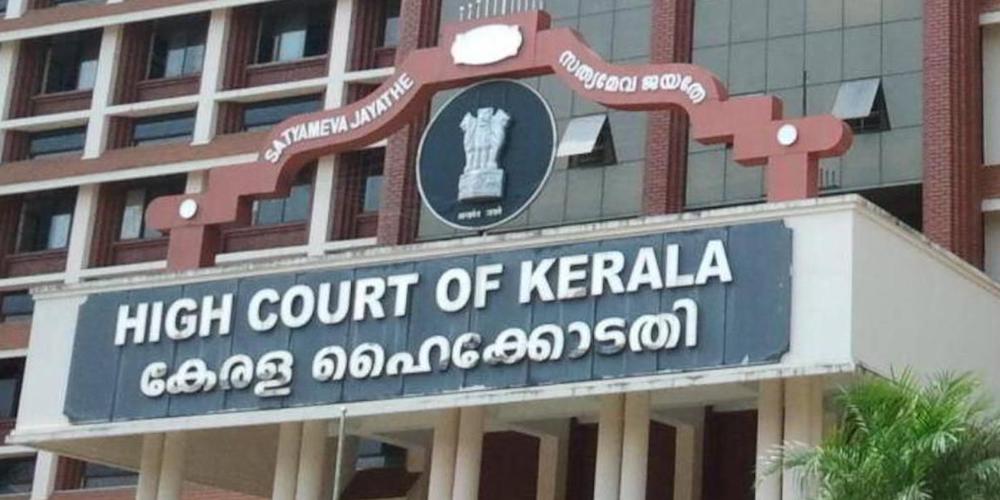Allegation Of Rape On False Marriage Promise Not Sustainable If Woman Continued Relationship Even After Knowing About Man’s Marriage: Kerala HC

While striking the right chord, the Kerala High Court in a most laudable, learned, landmark and latest judgment titled Sreekanth Sasidharan v. State of Kerala & Ors in Crl.MC No. 9201 of 2019 (FIR No. 401/2019 of Peramangalam Police Station on the file of the Judicial First Class Magistrate Court, Kunnamkulam) and cited in 2022 LiveLaw (Ker) 515 that was pronounced finally on October 6, 2022 has reiterated that if a man retracts his promise to marry a woman, the consensual sex they have had will not constitute rape unless it is established that the consent was obtained by him by giving false promise of marriage with no intention of adhering to it, and that promise made was false to his knowledge. It must be noted that the Single Judge Bench of Hon’ble Mr Justice Kauser Edappagath while quashing a rape case against a 33-year-old man said that the relationship between the accused and the complainant appears to have been purely consensual in nature. The Court also stated clearly that there is no allegation that when he promised to marry her, it was done in bad faith or with the intention to deceive her.
At the very outset, this brief, brilliant, bold and balanced judgment authored by the Single Judge Bench of Hon’ble Mr Justice Kauser Edappagath of Kerala High Court sets the pitch in motion by first and foremost putting forth in para 1 that, “This Crl.M.C has been filed to quash Annexure A1 FIR in Crime No.401/2019 of Peramangalam Police Station u/s 482 of the Code of Criminal Procedure (Cr.P.C.).”
Simply put, the Bench then states in para 2 that, “The petitioner is the accused. The 4th respondent is the victim/defacto complainant. The offences alleged against the petitioner are punishable under Sections 406, 420 and 376 of IPC.”
To put things in perspective, the Bench then envisages in para 8 that, “The learned Senior Public Prosecutor made available to me the entire case diary. A perusal of the case diary would show that the investigation has reached a fair stage. Almost all the material witnesses were questioned, and their statements were recorded. The statement of the 4th respondent u/s 164 of Cr.P.C was also recorded. Annexure A1(a) FI statement, the statements of the 4th respondent recorded under Section 161 of Cr.P.C as well as under Section 164 of Cr.P.C would show that the petitioner was known to her since August 2010 while she was working as a dance artist in Abu Dhabi Marine Club, UAE. The statement would further show that their relationship continued till 2019, and they had consensual sexual intercourse several times both in Abu Dhabi and at Chennai. According to her, she came to know about the fact that the petitioner was married five to six years before (i.e., in 2013-14) from one Mr. Praveen. It was alleged that the petitioner told her that he was separately living for the last more than four months and was moving for divorce, and she continued the relationship, and the petitioner used to visit her residence in Chennai and assured her that he would make a proposal for marriage after some time. Thereafter, she got information from Abu Dhabi that the petitioner was maintaining relationship with some other girls, and hence she backed from the proposal. It was further alleged that thereafter the petitioner threatened her that he would commit suicide and blocked her marriage proposals. It was also alleged that the petitioner came to her aunt’s house in Chennai on 29/3/2019 to register the marriage and to tie the knot at the temple. On 30/3/2019, they went to Rajeswari studio and took photos for conducting the marriage on 01/04/2019. On 31/3/2019, she got the photos of the petitioner with other girls from her friends and on knowing about the same, he left for UAE by cheating her. Thus, the statement given by the 4th respondent clearly reveals that she has had a relationship with the petitioner since 2010, and in 2013-14, she came to know that the petitioner was married and fully knowing the same; she continued the relationship and had sex with him. The statement further reveals that both have decided to marry, and the petitioner’s parents had proposed to her as well. She specifically admitted that she withdrew from the marriage as she doubted his morality.”
Most significantly, the Bench then minces no words to hold explicitly in para 13 of this notable judgment that, “As stated already, admittedly, the petitioner and the 4th respondent were in a consensual relationship right from 2010 until 2019. The 4th respondent has also admitted that in the year 2013-14, she came to know that the petitioner was married. Still, she continued the relationship and had sexual intercourse with him. It is stated in Annexure A1(a) that the parents of the petitioner went to the parents of the 4th respondent and made a proposal. It is also revealed that the 4th respondent, after coming to know of some other relationships of the petitioner with other women, decided to withdraw from the marriage. Annexure A1(a) or the statement of the 4th respondent recorded under Sections 161 and 164 would not reveal that the petitioner made any promise with the sole intention to seduce her to indulge in sexual acts. On a perusal of Annexure A1(a) statement, it is apparent that the petitioner had no mala fide intention or clandestine motives to conduct the alleged rape under the pretext of marriage. Further, even as per the allegations, it is evident that the marriage could not be materialised as the 4th respondent withdrew from the marriage, doubting the petitioner’s morality and on account of other unforeseen circumstances beyond the control of the petitioner.”
As we see, the Bench then states in para 14 that, “Annexure A6 is the extract of the post uploaded by the 4th respondent on her Facebook account, raising so many allegations against the petitioner. A perusal of the same would show that there is no allegation of any sexual assault or rape against the petitioner. Annexures A7, A7(a) and A8 would show that the petitioner had preferred complaints regarding the said post as early as 12/4/2019, 16/4/2019 and 18/4/2019 against the 4th respondent. It was thereafter that Annexure A1 FIR was registered.”
Most commendably, the Bench then puts it succinctly in para 15 stating that, “Against this backdrop and taking note of the allegations in the FIS as they stand, it is impossible to find the essential ingredients of an offence u/s 376 of IPC. The relationship between the petitioner and the 4th respondent appears to be purely consensual in nature. The relationship, as noted above, was in existence prior to the marriage of the petitioner and continued to subsist thereafter and even after the petitioner obtained the divorce. There is no allegation in the FIS that when the petitioner promised to marry the 4th respondent, it was done in bad faith or with the intention to deceive her. The admitted fact that the 4th respondent is having a relationship with the petitioner since 2010 and she continued the relationship knowing about his marriage from 2013 onwards would nullify the story regarding the sexual intercourse on the false pretext of marrying her. The alleged sex can only be termed as one on account of love and passion for the petitioner and not on account of misrepresentation made to her by the petitioner. Therefore, even if the facts set out in the FIS are accepted in totality, no offence u/s 375 of IPC has been made out.”
Finally, no less significant is what is then laid bare in para 16 stating that, “With reference to the offence under Section 406 or 420 of IPC, the allegations are so vague. There are absolutely no allegations to attract the ingredients of Sections 406 and 420 of IPC. The only allegation in the FIS is that the petitioner has obtained a total sum of `15,00,000/- and five sovereigns of gold ornaments giving a false promise of marriage. There is no allegation that there was an intention to deceive on the part of the petitioner at the time of handing over the money and gold ornaments. No fraudulent or dishonest inducement under the pretext of marriage can be revealed to attract the offence under Section 406 or 420 of IPC. Annexure A1(a) statement would reveal that no exploitation had taken place under the pretext of marriage, and there was no fraudulent or dishonest inducement of the 4th respondent by the petitioner to constitute the offence of cheating. In the report submitted by the investigating officer on 30/8/2019, in WP(C) No.22564/2019, it is stated that on investigation, it was found that there was no solid evidence with the victim of the offence of cheating and breach of trust. Hence, offences under Sections 406 and 420 of IPC are also not attracted. Considering the above findings, I am of the view that no useful purpose will be served by allowing the criminal prosecution against the petitioner to continue. Hence, all further proceedings in Annexure A1 FIR in Crime No.401/2019 of Peramangalam Police Station hereby stand quashed. Crl.M.C. is allowed as above.”
In essence, the inevitable conclusion that has to be drawn here is that the Kerala High Court has made it abundantly clear that the allegation of rape on a man on false marriage promise is just not sustainable if women continued relationship even after knowing about man’s marriage. It merits no reiteration that all Courts must pay heed to what the Kerala High Court has laid down so very clearly, cogently and convincingly in this leading case. No denying it!



